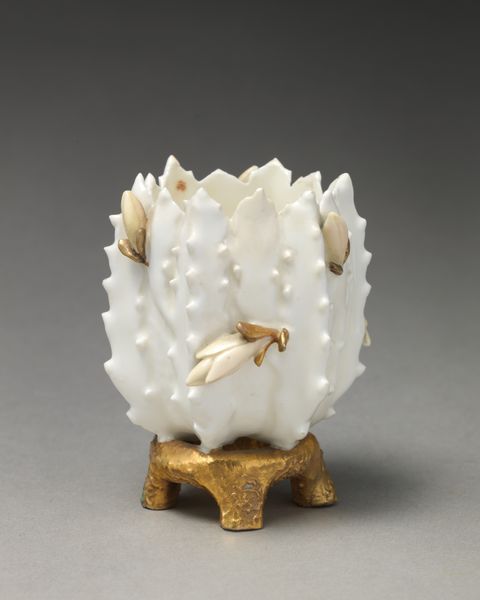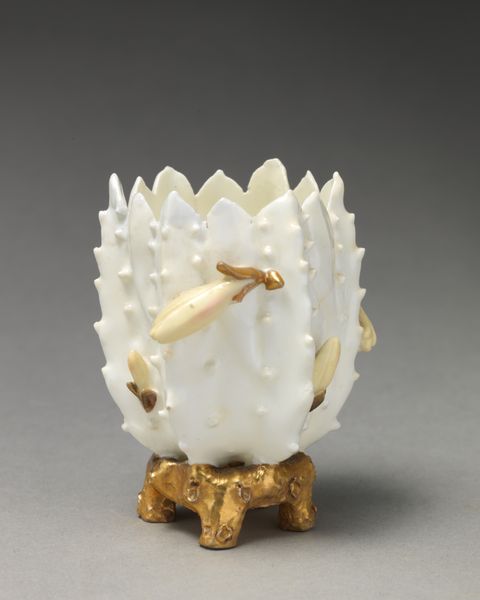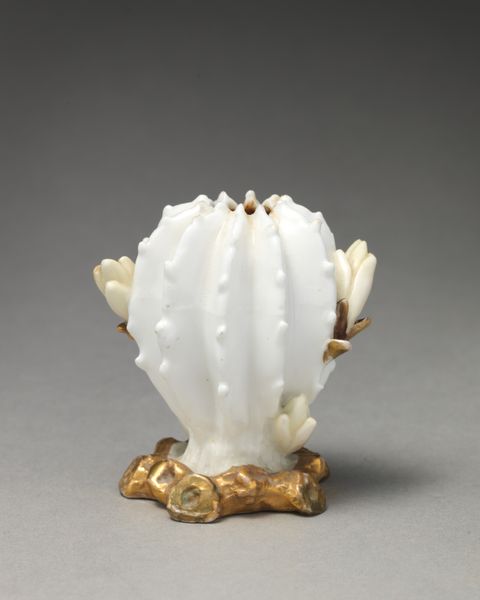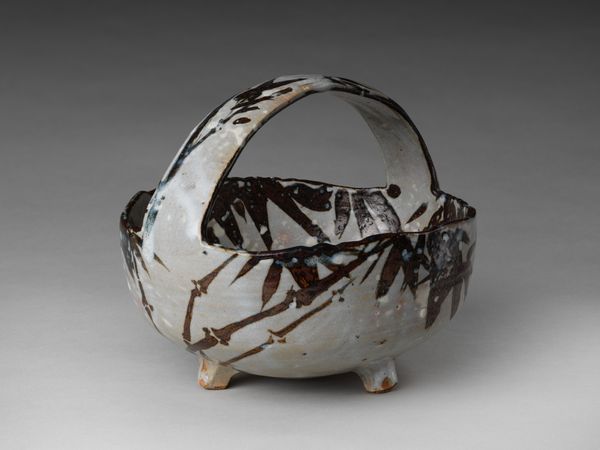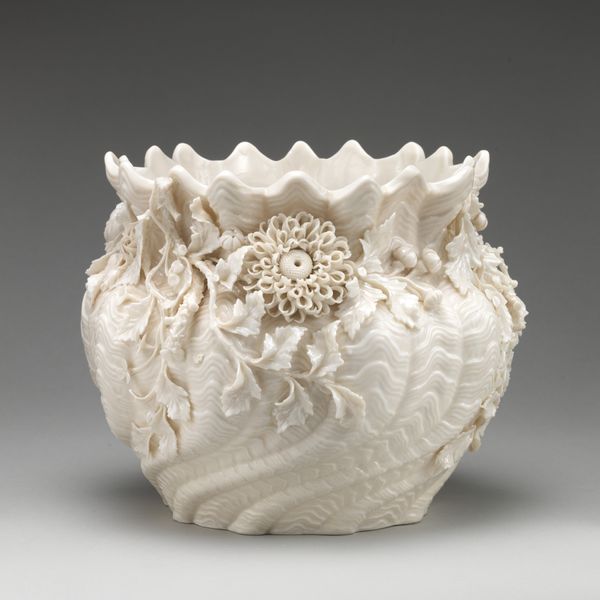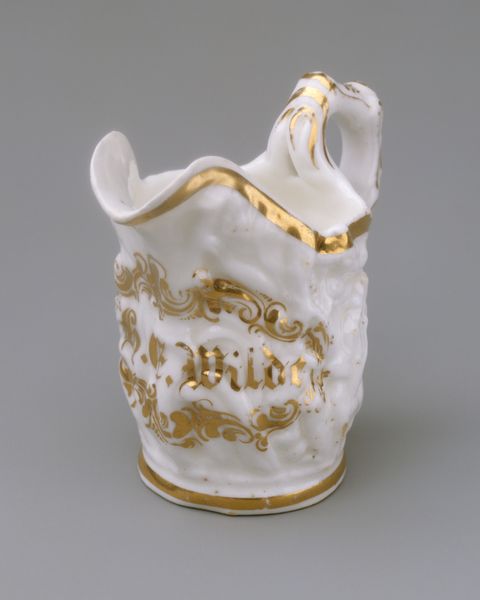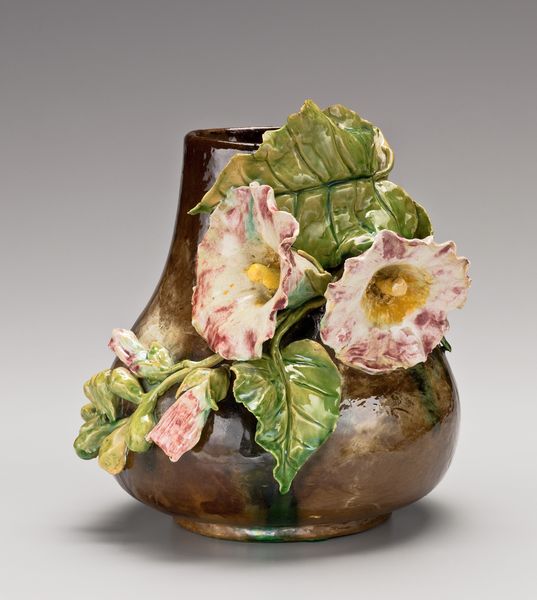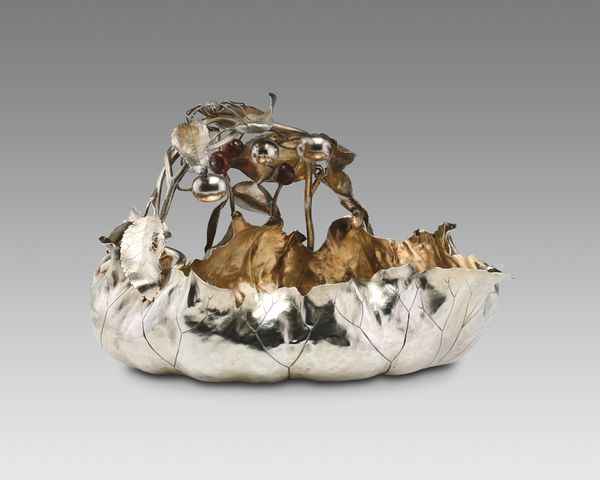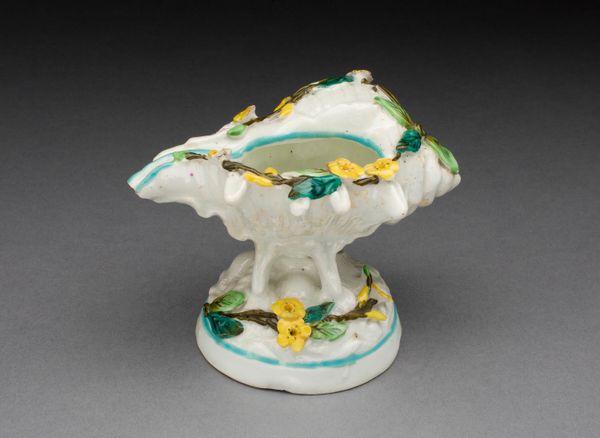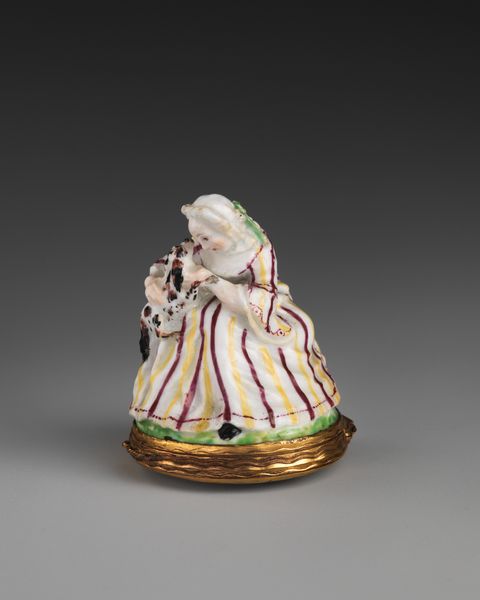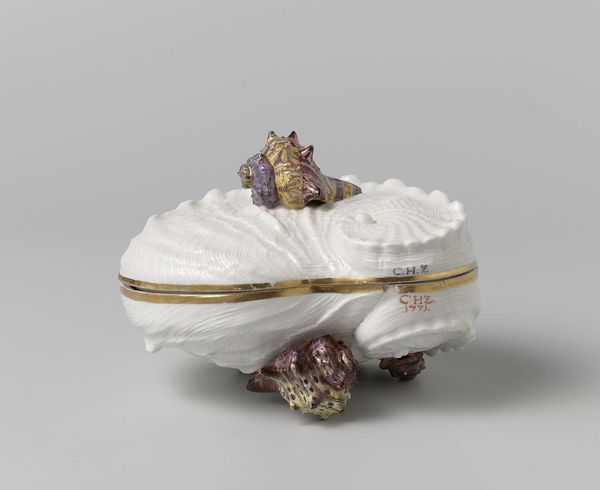
ceramic, porcelain, sculpture
#
ceramic
#
porcelain
#
sculpture
#
decorative-art
Dimensions: confirmed: 4 15/16 × 5 1/2 × 5 in., 12.345oz. (12.5 × 14 × 12.7 cm, 350g)
Copyright: Public Domain
Curator: The "Cactus Flower Vase" by Moore Brothers, crafted sometime between 1870 and 1880. You'll find it here at the Metropolitan Museum of Art. Editor: Well, visually, it's quite striking. It's delicate and almost dreamlike in its construction, despite being crafted from ceramic and porcelain. I’m immediately struck by its otherworldly quality. Curator: Moore Brothers were active participants in the Victorian era's enthusiasm for elaborate decorative art, wouldn’t you agree? Considering the explosion of industrialization and globalization, the burgeoning middle class sought displays of status and cultivated taste. Editor: Absolutely. The form mimics nature—but it's not truly nature. The vase itself appears like the stark white, spiky body of a cactus, and delicate, pink-tinged porcelain flowers emerge from it asymmetrically. I wonder, does that fragility represent a Victorian-era construct of idealized femininity imposed on the natural world? Curator: I think you make a solid point. There’s the contrast between the rigid base—gilded to amplify a sense of luxury—and these seemingly soft, blossoming buds. The entire composition plays with expectation and artifice. Moore Brothers created objects for a society in flux. Editor: It feels loaded with social meaning, doesn't it? Like this ornamental object isn't *just* beautiful—it’s about constructing social narratives surrounding taste, wealth, and this strange detachment from the origins of creation. It also reflects the commodification of nature during this historical moment. Curator: Exactly. It challenges our 21st-century values about simplicity and minimalism. In the late 19th century, opulence signalled influence. And art schools, museum collections, as well as these sorts of pieces appearing in publications helped disseminate artistic tastes to that new wealthy public. Editor: Seeing such ornamentation, it's difficult not to reflect on where we stand today. This is a very tangible representation of the artistic trends and economic disparities of the Victorian age that continue to cast long shadows over contemporary social discourse. Curator: I completely concur; it reminds us that even decorative art serves as a window into complex historical power structures. Editor: Thank you for expanding our understanding, your approach encourages a more socially-conscious dialogue with such objects.
Comments
No comments
Be the first to comment and join the conversation on the ultimate creative platform.
